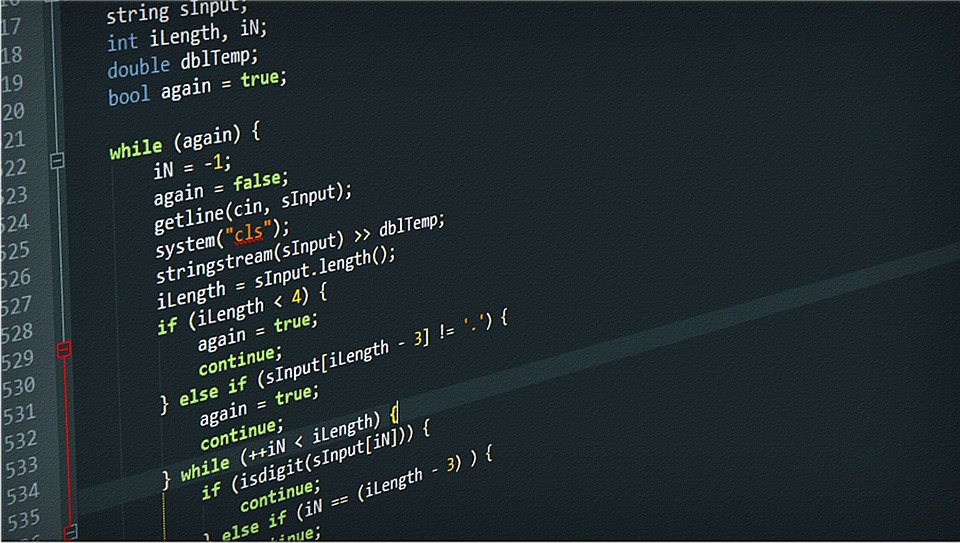The rise of AI-generated code and increasingly sophisticated AI agents will change the game for enterprises and startups seeking to do more with less. But it’s no magic bullet. Leveraging AI across the software development lifecycle (SDLC) has its challenges. If your tools, processes and infrastructure are not designed to scale, you risk losing the efficiency gains AI promises.
This presents a challenge for IT and engineering leaders, who need to find ways to maximize efficiency with AI while mitigating the risks and bottlenecks AI can bring.
AI may be the next gold rush for innovators, but unless you have the right systems in place to review, test, and fix errors from AI-generated code, you will struggle to scale effectively. Implementing a robust continuous integration and continuous delivery (CI/CD) foundation is key to ensure your systems and software engineers can keep pace with AI.
ROI on AI Adoption Remains Elusive
Despite the hype and excitement around AI, adoption is still lagging. According to a recent survey of DevOps professionals, only 33% work for a company using AI to build software.
While AI can significantly boost speed, it also drives higher throughput, increasing the demand for testing, QA monitoring, and infrastructure investment.
More code means development teams need to find ways to shorten feedback loops, build times, and other key elements of the development process to keep pace. Without a solid DevOps framework and CI/CD engine to manage this, AI can create noise and distractions that drain engineers’ attention, slowing them down instead of freeing them to focus on what truly matters: delivering quality software at the right pace.
Don’t Ignore Your CI/CD Foundation
To harness the promise of AI across your Software Development Life Cycle (SDLC), you need a scalable CI/CD platform that can keep pace. Without it, here are some examples of the challenges you could face.
Rapid Iteration Puts Strain on Your Systems
AI-driven development leads to rapid code generation. By using Cursor, Windsurf, Claude Code, Copilot, and other AI-assisted coding tools, you can get more done in a shorter time. AI agent software engineers are already on the horizon, capable of generating code in seconds. In addition, it’s now possible to leverage advancements like Model Context Protocol (MCP) Server, to check CI results autonomously, identify issues, and iterate to continuously improve.
However, this increased throughput due to AI still needs rigorous testing, rapid troubleshooting and increased scrutiny from a security perspective. If your team is still relying on a manual test and release process, there’s likely no way you can keep up with the required level of testing and validation. Bottlenecks will slow the process down as software engineers drown in the noise of AI-generated suggestions.
Faster Code Generation Can Lead to Longer Wait Times
AI promises to cut the time engineers spend generating code, but that code still needs to be compiled, tested, and shipped.
Without a DevOps platform to automate the Quality Assurance (QA) process across every line of code, teams will waste time manually hunting for errors and fixing them, losing velocity gains. Continual optimization of CI/CD workflows is critical to ensure code functions correctly and is tested thoroughly. Moving your code through the process is only fast if your pipelines and team can keep up with the increased throughput.
Manual Workflows Increase Risk
AI copilots and agents generate and modify code at an exponential rate, but manual and inconsistent workflows can leave bugs and issues undetected, compromising the quality of the user experience.
In contrast, automated pipelines help teams find and resolve problems early, such as identifying a new issue or regression, tracking where it appears and even fixing it via automation. With a strong CI/CD, stable code is released quickly and consistently through automated workflows, moving it through the process efficiently.
Harnessing the Promise of AI Agents
AI agents are taking root as the next big advancement in software development, capable of solving problems autonomously, writing code, testing, and deploying 24/7.
However, while the promise of agents is undeniable, there is still work to be done to build trust in their safety and accuracy.
Without human oversight and a CI/CD foundation capable of handling rapid iterations, AI agents will struggle to deliver stable, reliable software.
This is a challenge that won’t go away. To stay relevant tomorrow, engineering and IT leaders must solve this challenge today. Otherwise, they risk other companies outperforming and overtaking them.
Future-Proof AI-Driven Development With the Right CI/CD Foundation
To successfully merge and release incremental code changes, they must go through a CI/CD platform to have consistent testing and issue detection.
To scale the benefits of AI agents, you need to scale CI/CD in multiple dimensions:
- Reduce CI time: Faster builds mean quicker testing and feedback for AI-driven development.
- Increase parallel processing: More compute power ensures multiple builds can run simultaneously.
For example, if each build takes 30 minutes, only two iterations can be tested per hour. But by optimizing with test parallelization and smart caching (e.g., Gradle, Bazel build tools), and reducing CI time to 1-2 minutes, 30-60 iterations can be tested in the same hour.
That’s a 30x faster feedback loop, a step change in speed that’s crucial for engineers, especially as AI generates code continuously.
The Cost of Inadequate CI/CD Infrastructure in the AI Era
Many software development teams today operate with suboptimal CI/CD foundations that are ill-prepared for the demands of AI-driven development. As a result, they face a myriad of disconnected tools, manual processes, and technical debt, creating significant inefficiencies:
- Fragmented toolchains: Teams cobble together different point solutions for building, testing, artifact management, and deployment, creating integration headaches and maintenance burdens.
- Local build dependencies: Developers waste hours configuring local environments that don’t match production, leading to the classic “it works on my machine” problem.
- Cache inefficiency: Without proper caching strategies, teams repeatedly build identical components, wasting computing resources and developer time.
- Sequential workflows: Tasks run one after another instead of in parallel, creating bottlenecks and extending feedback cycles from minutes to hours.
- Inconsistent environments: Differences between development, testing, and production environments lead to deployment failures and hard-to-reproduce bugs.
- Poor visibility: Limited observability across the pipeline makes it difficult to identify bottlenecks or opportunities for optimization.
These issues, problematic in traditional development, become critical blockers when AI accelerates code generation. When an AI agent can produce dozens of iterations in minutes, a CI/CD system that takes hours to validate each change creates an impossible backlog.
Selecting the Right CI/CD Partner: Beyond Basic Builds
As you evaluate CI/CD platforms to support your AI-driven future, look beyond basic build capabilities. The right solution should function as an integrated system rather than requiring you to assemble and maintain disparate components.
Consider this essential capabilities checklist:
- Integrated end-to-end pipeline management
- Single platform that handles the entire workflow from code commit to production deployment.
- Automated dependency management and resolution.
- Built-in secret management and security scanning.
- Advanced caching architecture
- Intelligent layer caching that understands your codebase’s structure.
- Remote build cache with cross-team and cross-branch sharing capabilities.
- Granular cache invalidation that preserves useful artifacts while ensuring correctness.
- Distributed execution framework
- Remote build execution that scales automatically with demand.
- Intelligent workload distribution that optimizes for speed and cost.
- Cross-platform support for building on multiple operating systems simultaneously.
- Resource optimization
- Dynamic resource allocation based on build requirements.
- Test distribution and parallelization to minimize feedback time.
- Cost analytics and optimization recommendations.
- Developer Experience
- Local development environments that match CI/CD configurations.
- Fast, actionable feedback on code quality and test results.
- Self-service capabilities for teams to optimize their own workflows.
- Enterprise readiness
- Compliance and audit capabilities are built into the platform.
- Robust access controls and governance features.
- Reliable support and clear documentation.
The strongest CI/CD platforms integrate these capabilities into a cohesive system rather than forcing teams to connect and maintain separate tools for each function. This integration is crucial because each boundary between tools represents potential failure points, performance bottlenecks, and administrative overhead.
For example, when caching, build execution, and artifact management are tightly integrated, the system can make intelligent decisions about when to reuse artifacts versus rebuilding. This integration eliminates the need for developers to understand the intricacies of cache invalidation or manually configure build parameters to optimize performance.
As AI-driven development accelerates, this unified approach becomes even more valuable. When an AI agent suggests a change, the system can quickly determine which tests need to run, which artifacts can be reused, and how to most efficiently validate the change, all without human intervention.
By investing in a CI/CD platform with these capabilities, you’re not just buying a tool — you’re establishing the foundation that will determine whether AI becomes a force multiplier for your team or simply creates more noise in an already complex system. The right platform turns your CI/CD pipeline from a bottleneck into a strategic advantage, allowing your team to harness AI’s potential while maintaining quality, security, and reliability.
To harness the speed and efficiency gains of AI-driven development, you need a CI/CD platform capable of handling high throughput, rapid iteration, and complex testing cycles while keeping infrastructure and cloud costs in check.
In summary, to be ready for the future, you need a CI/CD platform that:
- Provides an integrated system with advanced caching architecture and parallel processing to handle AI’s increased throughput.
- Reduces feedback cycles from hours to minutes through optimized workflows and resource allocation.
- Maintains quality and security standards while enabling rapid iteration and testing.
- Serves as a strategic advantage rather than a bottleneck in the AI-driven development lifecycle.
It is easy to get caught up in the excitement of powerful technologies like AI and dive straight into experimentation without laying the right groundwork for success. But in reality, teams need more than just a co-pilot to stay competitive with AI; they need the plane, the runway, and the control tower.
With a strong CI/CD platform, your development teams will be ready to tackle many AI-driven challenges and capitalize on new advancements at the pace the future demands.
YOUTUBE.COM/THENEWSTACK
Tech moves fast, don’t miss an episode. Subscribe to our YouTube
channel to stream all our podcasts, interviews, demos, and more.
SUBSCRIBE
Group
Created with Sketch.

Arpad is a tech innovator and Head of Engineering and Infrastructure at Bitrise, the Mobile DevOps platform trusted by thousands of world-leading brands. With past leadership roles at Facebook, IBM, and Ustream (acquired by IBM), he brings deep technical acumen,…






